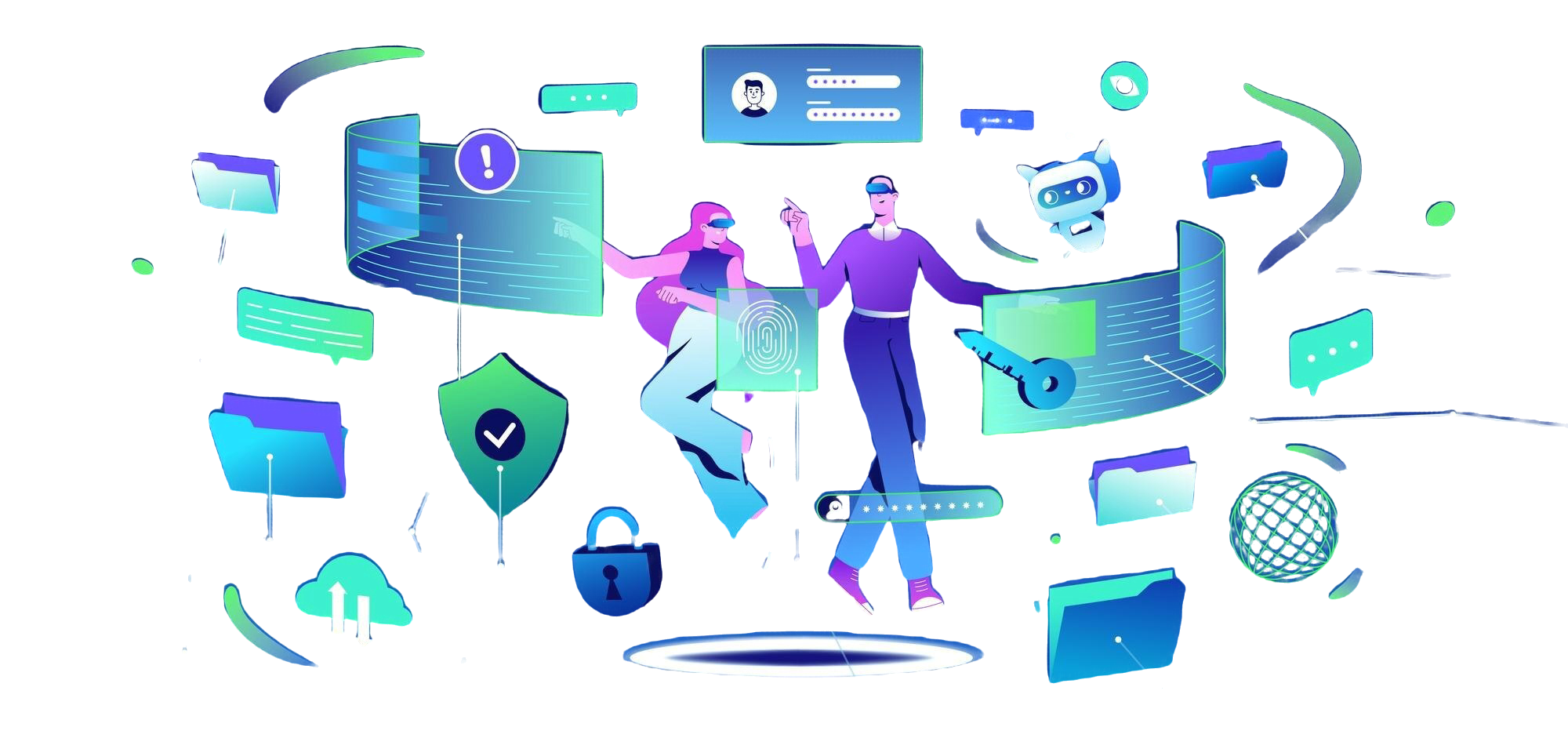How Artificial Intelligence is Shaping the Future of Cybersecurity
Future of Cybersecurity: How Artificial Intelligence is Expected to Shape It.
Artificial intelligence is redesigning the cybersecurity landscape by enabling businesses and security teams to quickly detect and respond to otherwise invisible threats and counter them in real time. As security threats grow more complex, AI is becoming more indispensable for organizations looking to gain the upper hand against today’s adversaries. To this end, here’s a journey into how AI can shape the future of cybersecurity-from automated threat detection and predictive analysis all the way down to mission-critical functions protecting today’s digital ecosystems.
Threat identification would be enhanced with AI and ML:
AI-powered threat detection employs machine learning algorithms to discern anomalies within networks and systems by identifying unusual patterns and behaviors. It draws upon real-time recognition of constantly evolving attack vectors, which can often take mere seconds to detect using traditional methods. This means easier detection of potential threats, fewer false positives, greater security. It can detect unusual user activity, which may point to phishing, unauthorized login, or malware infection.
Predictive Analytics: Proactive And Preventive Approach To Cyber Threats
The value of AI realized through predictive analytics is the ability of organizations to predict and mitigate cyber risks when they are not yet significant threats. It means that by leveraging the ability to scan massive datasets from previous attacks, AI can identify vulnerabilities and alert security teams. The benefits include the early alert of potential threats, improved incident response, and minimized chances of successful attacks. AI retains track of previous phishing attempts to predict and prevent similar attempts from coming in the future, thereby making electronic communications safer.
Cyber Incident: Automated Response
In the realm of classical cybersecurity, humans are tasked with confronting threats, yet there is invariably a time lag in their responses. In contrast, AI-driven automated incident response equips security systems with the capacity to react instantly to potential breaches, thereby minimizing damage and thwarting the spread of attacks. The benefits encompass a quicker response to threats, lower operational costs, and a lesser impact from cyber attacks. For example, if the system of an AI perceived ransomware malice, it might instantly quarantine the affected systems to avoid the spread malware to the whole network.
Adaptive Security: AI-Powered Behavioral Analytics
AI is the backbone behind adaptive security, letting systems understand the normal behaviors in an organization and change with time to adapt to newly emerging patterns. Adaptive security methods facilitate identification of normal as well as abnormal activities, including unauthorized access or unusual data transfers. Such benefits would include protection from insider threats, personalized security, and real-time threat intelligence. The system constantly checks up on a user’s access patterns, tracking deviations on login locations and data access times.
Proactive Defense Using AI-Powered Threat Intelligence
AI can analyze vast amounts of data coming from various sources and present it as thoughtfully compiled threat intelligence. This, in turn, makes organizations more proactively positioned to respond to emerging trends, weaknesses, and actors in their confrontation with challenges like cybersecurity. Benefits With a changing threat landscape, it would remain proactive in elimination of threats while improving security features. AI-driven threat intelligence also has the ability to alert businesses to the latest malware campaigns launched against their industry so they can better prepare their defenses.
AI phishing
It detection and prevention Among the most popular cyber threats today are phishing attacks. When this threat is coupled with AI, means of defense multiply exponentially. AI sharpens the sensitivity of catching those phishing emails beyond what is achievable from traditional content-based and sender-recipient behaviour-based filters.
Benefits: Enhanced e-mail security, reduced successful attacks by phishing, and reduced employee risk exposure. Example: AI scans all incoming e-mail for rogue links or attachments and alerts the users to it, blocking malicious content. Challenges and Limitations of Artificial Intelligence in Cybersecurity.
While AI offers breakthrough advantages, new challenges emerge with such innovations which companies need to be aware of.
- Cybersecurity with AI, on the other hand, is a tool that needs both infrastructure and manpower investments.
- Quality Data Dependency: For the AI to be convincing in the identification of threats, it needs high-quality data, which in turn is difficult to maintain over time.
- AI-Powered Cyber Attacks: Cyber criminals on their part are increasingly using AI. This calls for constant development and upgrade of the AI model to outsmart such attackers over time.
The Future of Cybersecurity
AI While the technology advances, so too will its applications be in cybersecurity. Advancements in AI-driven automation, near real-time analytics, and self-learning systems will forever improve cyber defenses and give organizations the upper hand in controlling their digital security. Some of the expected developments are as follows:
Self-Healing Systems: AI-driven mechanisms that would autonomously address vulnerabilities before such vulnerabilities could be exploited by cybercriminals. Another development in AI is that of Threat Hunting that uses artificial intelligence to relentlessly understand unidentified threats at the both network and endpoint levels, thus improving overall security.
Voice and Biometric Security: AI-driven biometric security features like voice and facial recognition can be integrated which can super charge the user authentication process. Deep Thoughts AI is changing the landscape of cyber security by enabling quicker detection, predictive insights, and automatic responses that allow companies to easily face cyber threats. This innovation in store will change the face of the next level of significance of AI in cybersecurity to enable businesses with the tools they need to protect sensitive data it houses while keeping their systems resilient. Incorporating artificial into cybersecurity would mean that most recently incubated cyber threats that gained widespread traction could no longer breach organizational defenses because they could be better protected.
